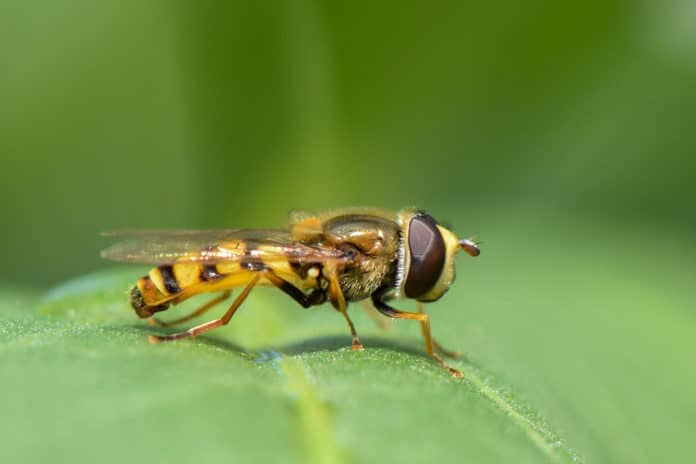Robust detection of acoustically quiet, slow-moving, small unmanned aerial vehicles is challenging. Now, researchers from the University of South Australia and Flinders University have reverse engineered the visual systems of hoverflies to detect drones’ acoustic signatures from almost four kilometers away.
Insect vision systems have been mapped for some time now to improve camera-based detections, but according to the researchers, this is the first time that bio-vision has been applied to acoustic data. The bio-vision processing has been shown to greatly increase the detection range of drones in both visual and infrared data. And now the researchers have shown that they can pick up clear and crisp acoustic signatures of drones, including very small and quiet ones, using an algorithm based on the hoverfly’s visual system. The algorithm extends detection ranges by up to 50%, the team says.
Unauthorized drones pose distinctive threats to airports, individuals, and military bases. It is therefore becoming ever-more critical for us to be able to detect specific locations of drones at long distances, using techniques that can pick up even the weakest signals.
By applying a model of the photoreceptor stage of the hoverfly vision system, it is shown that the acoustic patterns can be enhanced and noise greatly suppressed. Compared with traditional narrowband and broadband techniques, the bio-inspired processing can extend the maximum detectable distance of the small and medium-sized unmanned aerial vehicles by between 30% and 50% while simultaneously increasing the accuracy of flight parameters and trajectory estimations.
By converting acoustic signals into two-dimensional images (called spectrograms), researchers used the neural pathway of the hoverfly brain to improve and suppress unrelated signals and noise, increasing the detection range for the sounds they wanted to detect.
The findings could help combat the growing global threat posed by IED-carrying drones, which are now among the deadliest weapons in modern warfare, killing or injuring more than 3000 enemy combatants in Afghanistan and being deployed in the current war in Ukraine.
